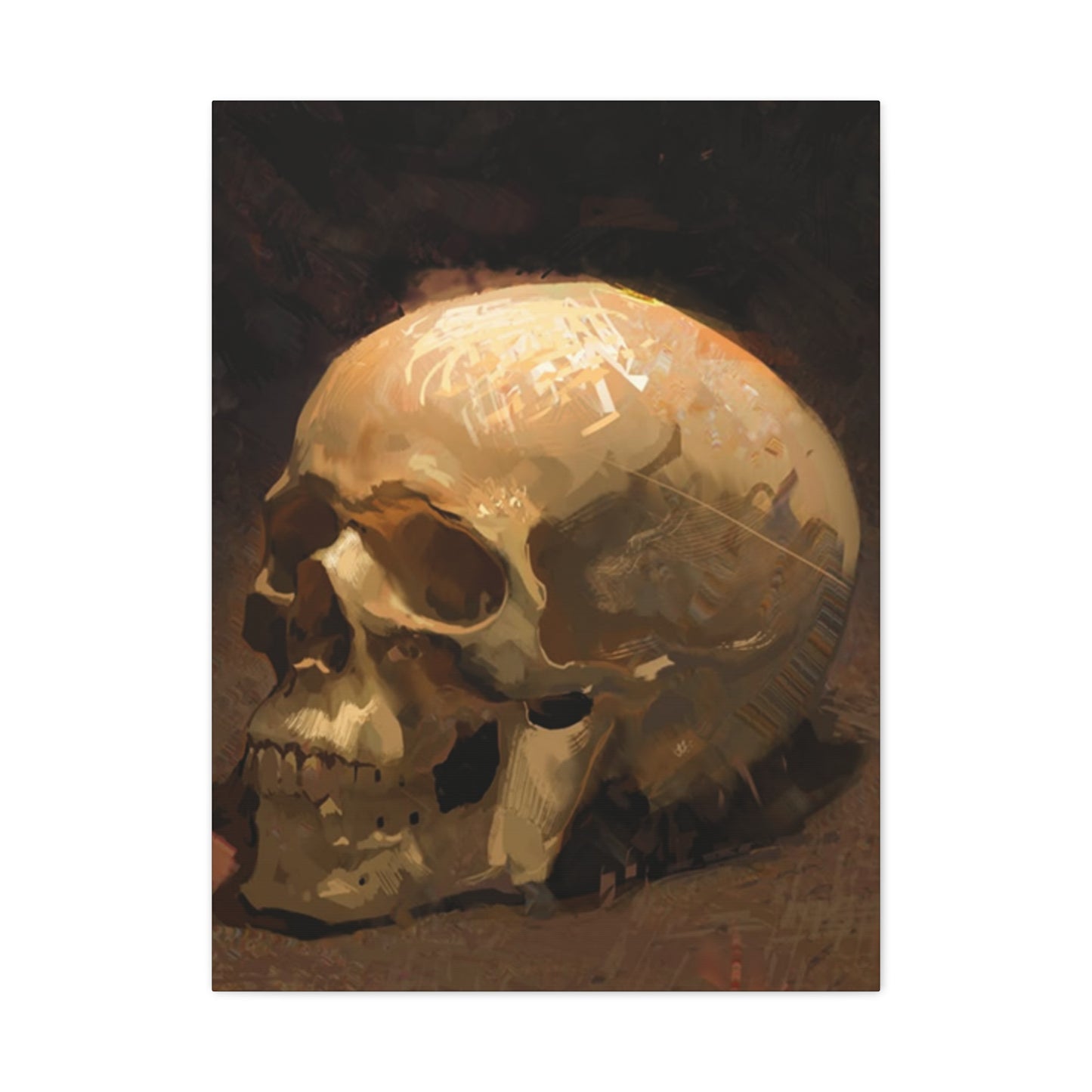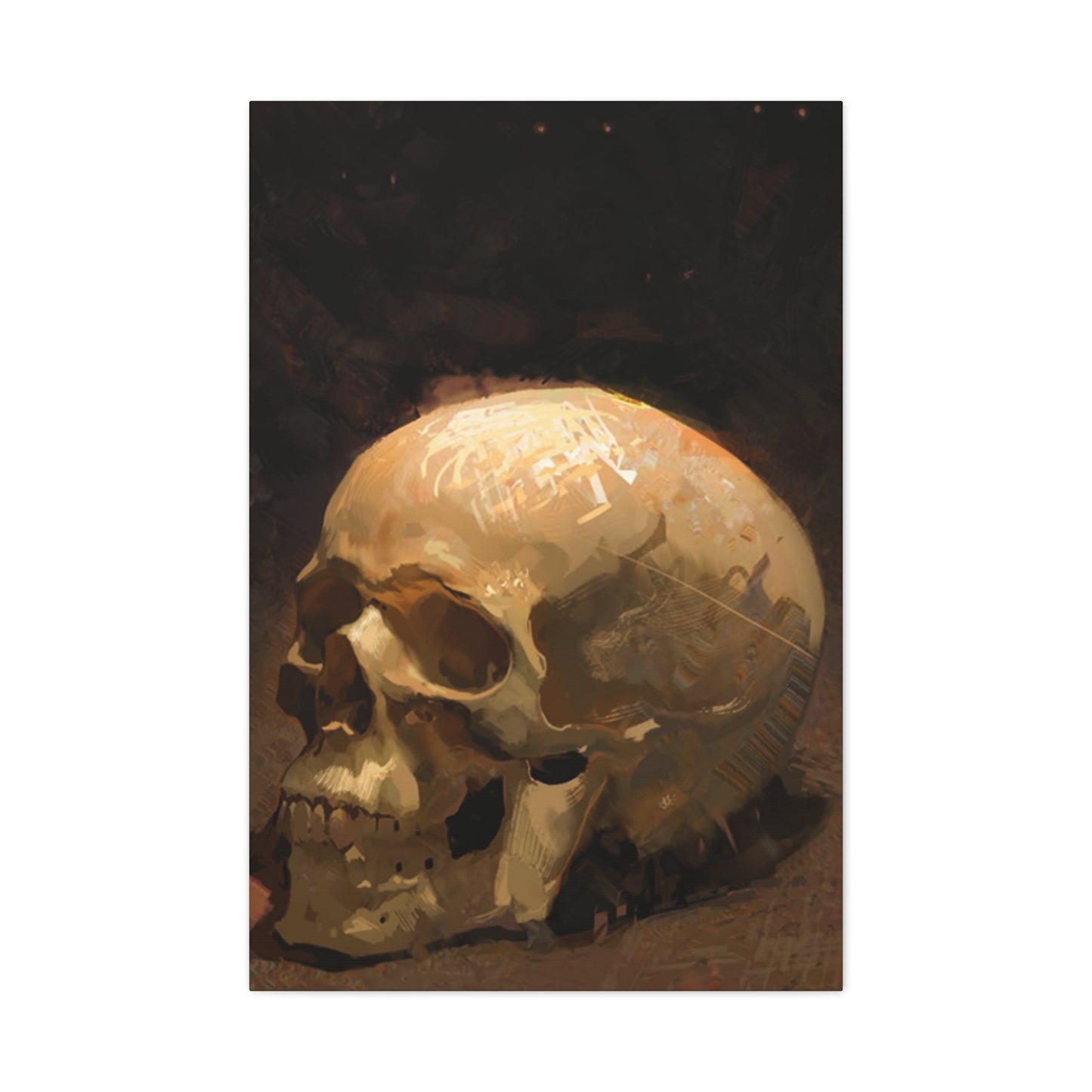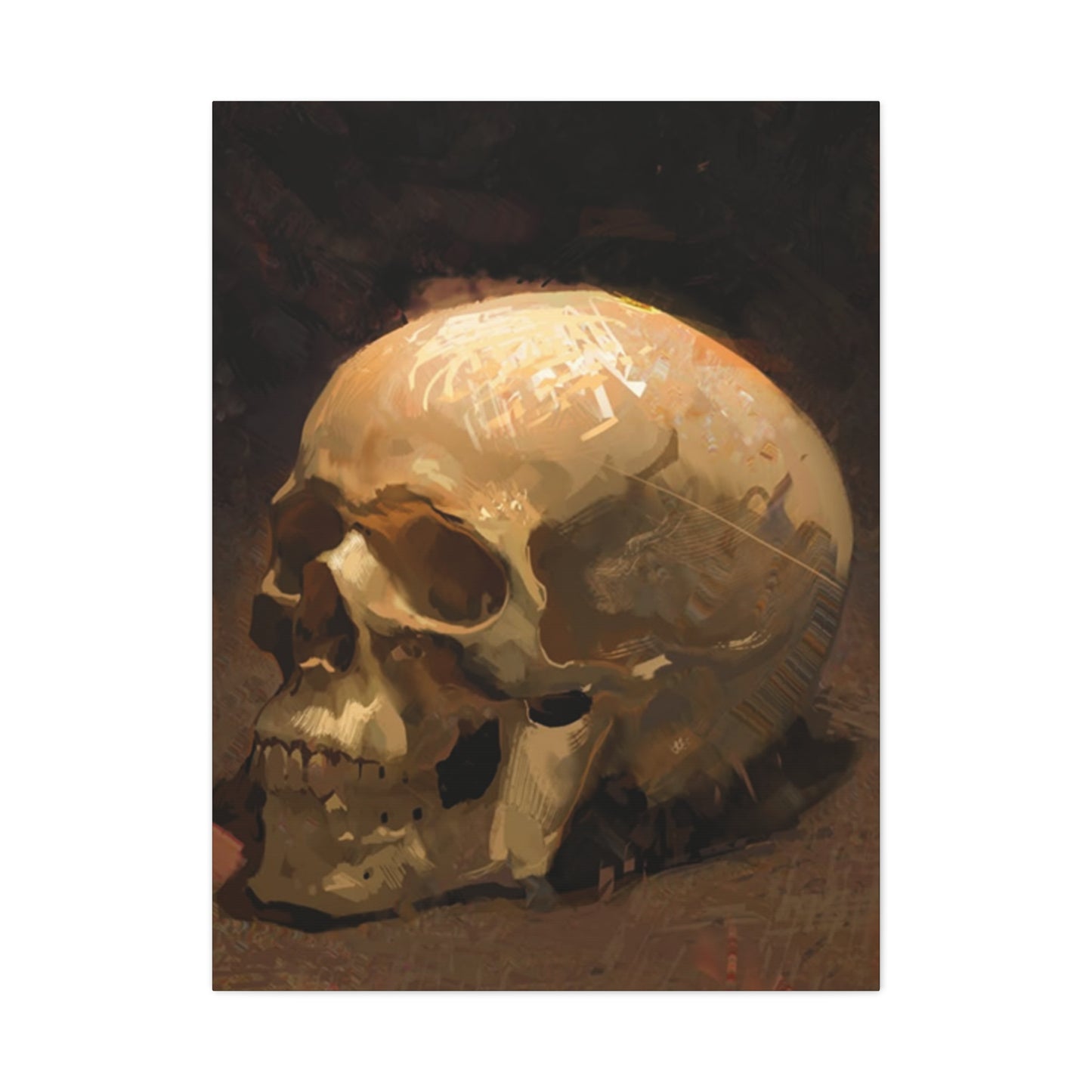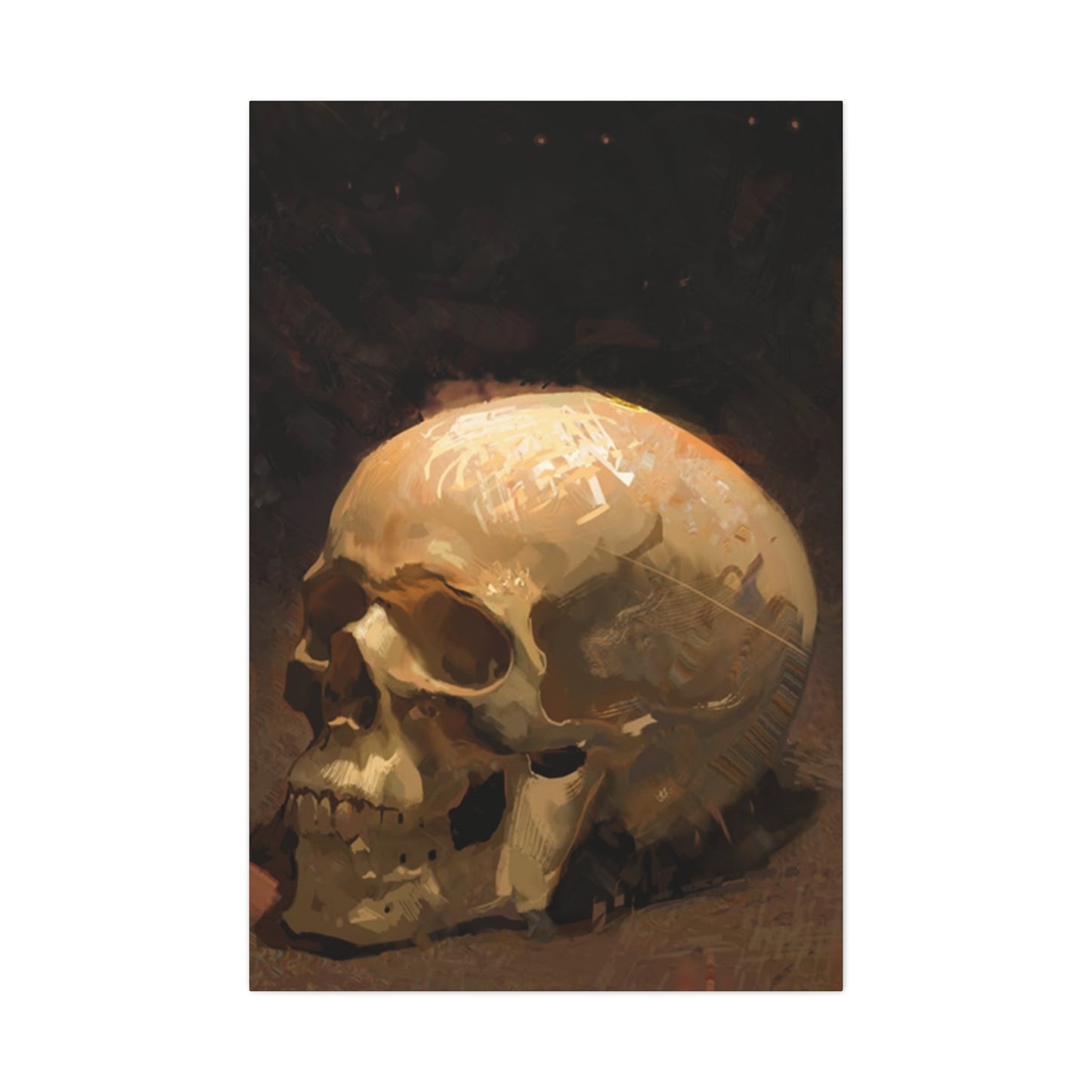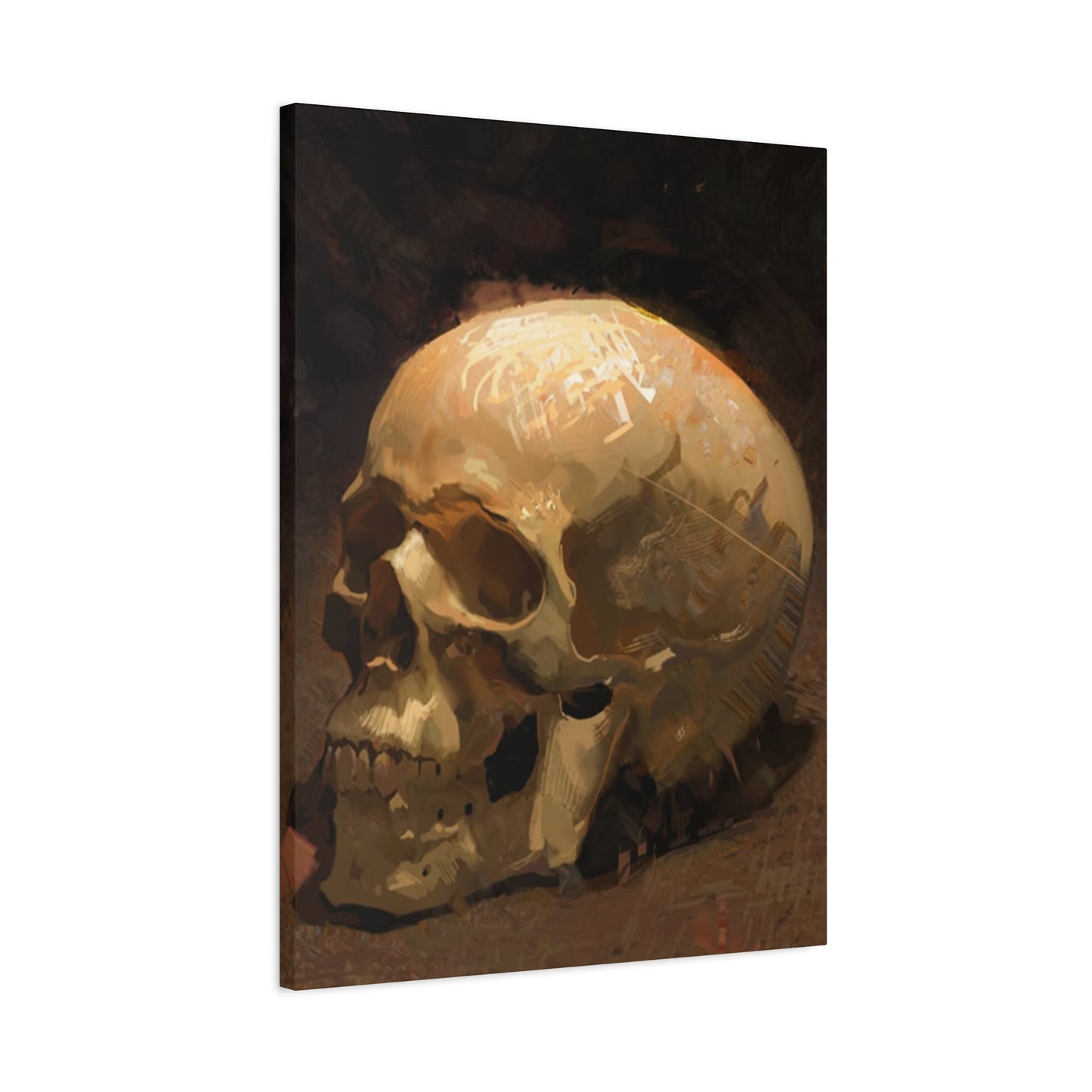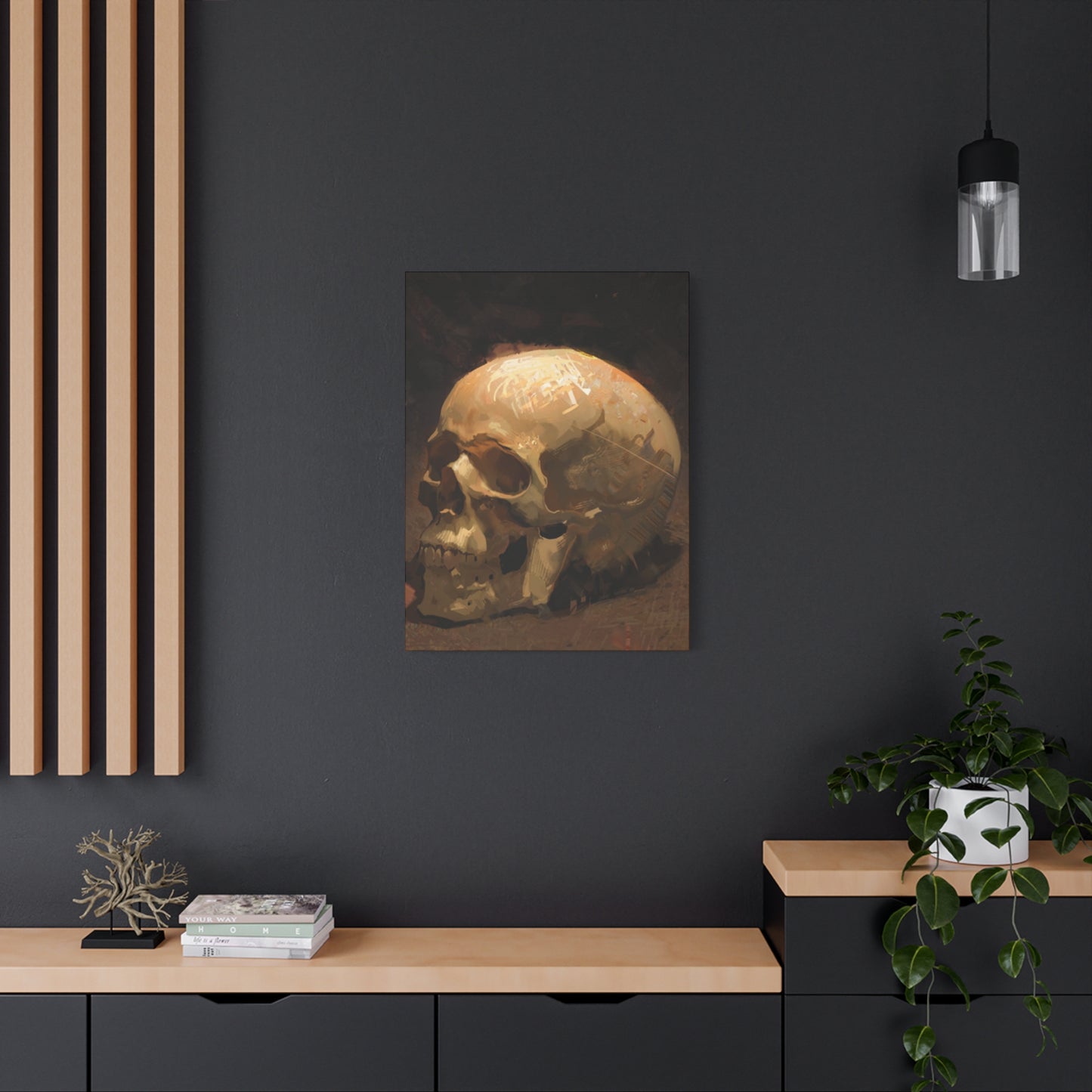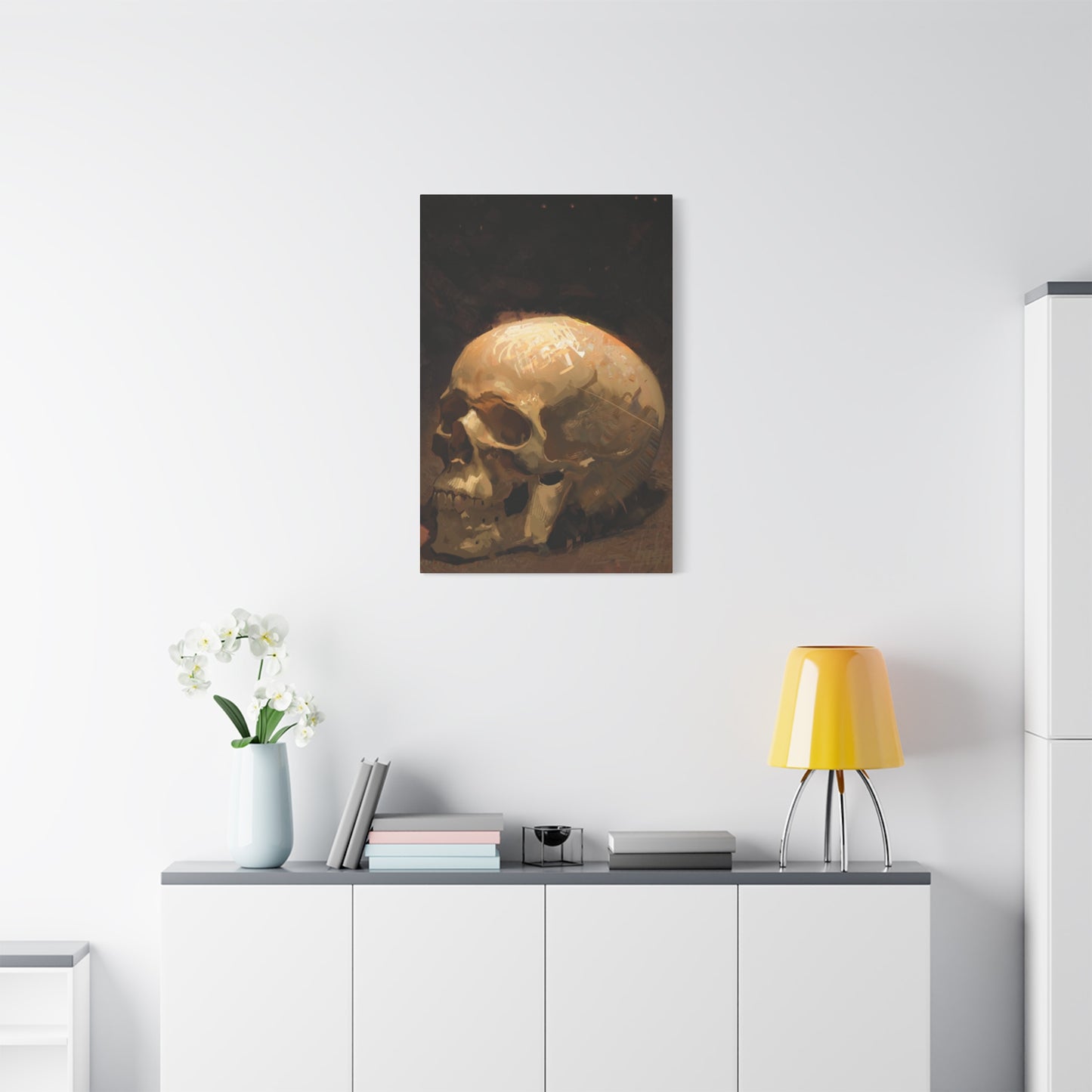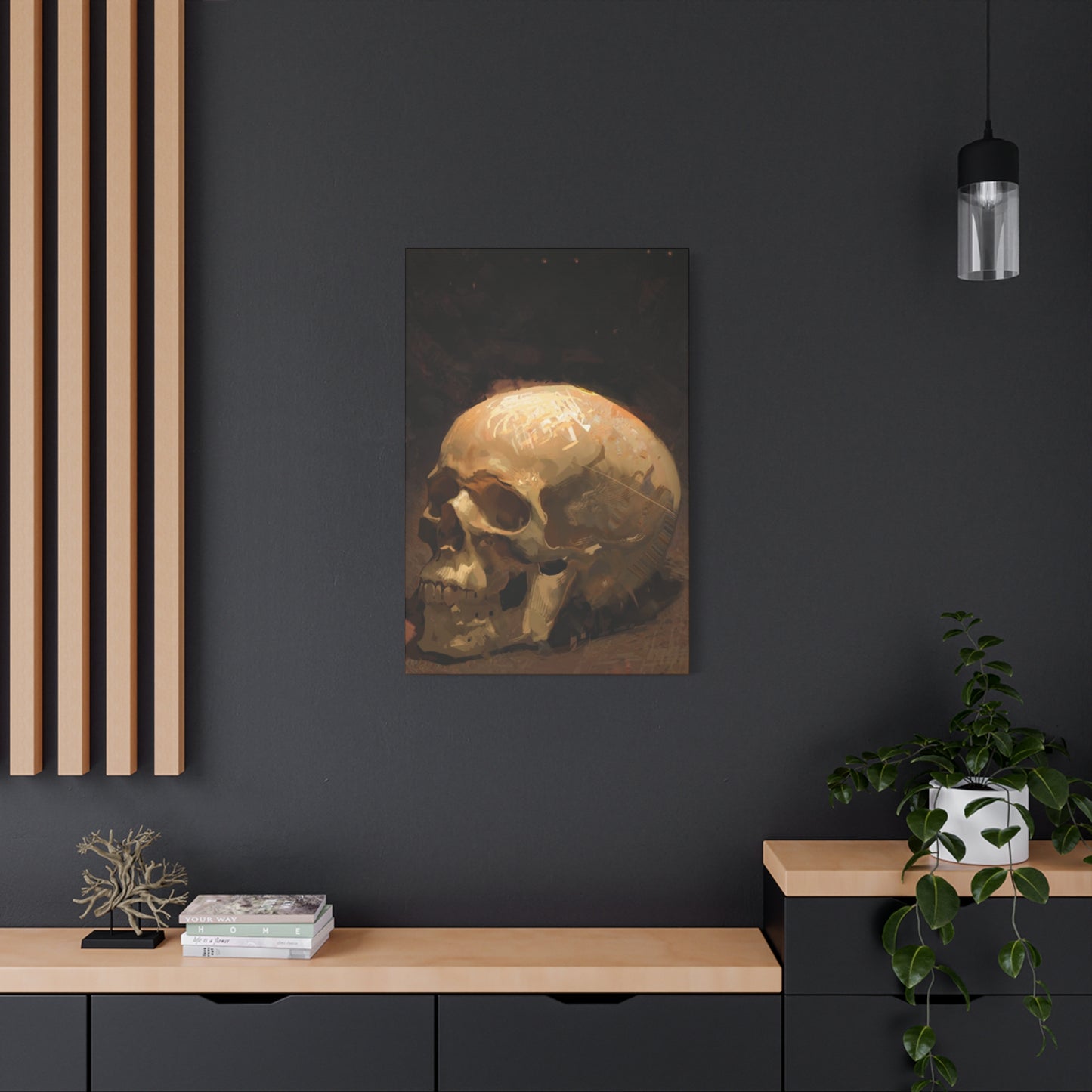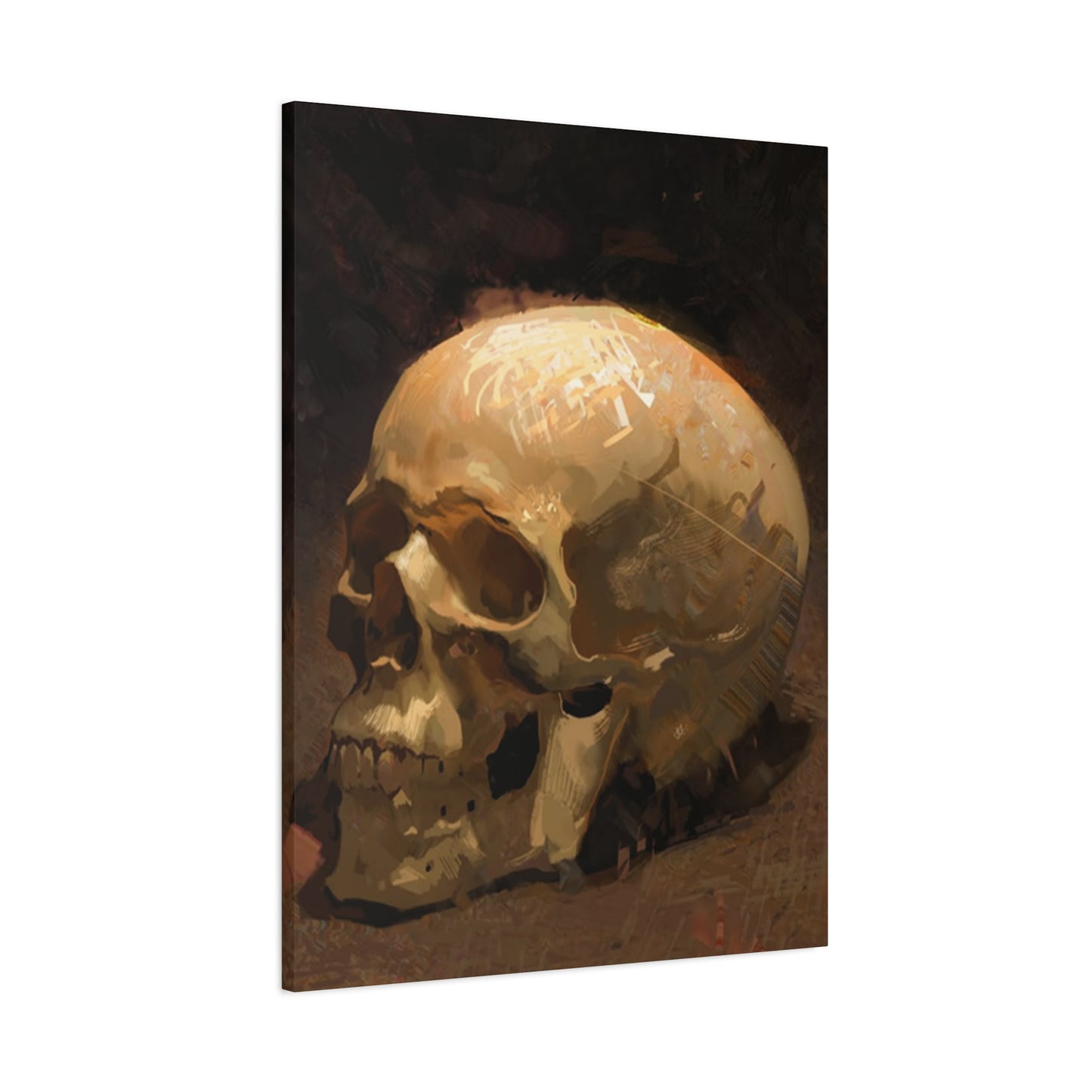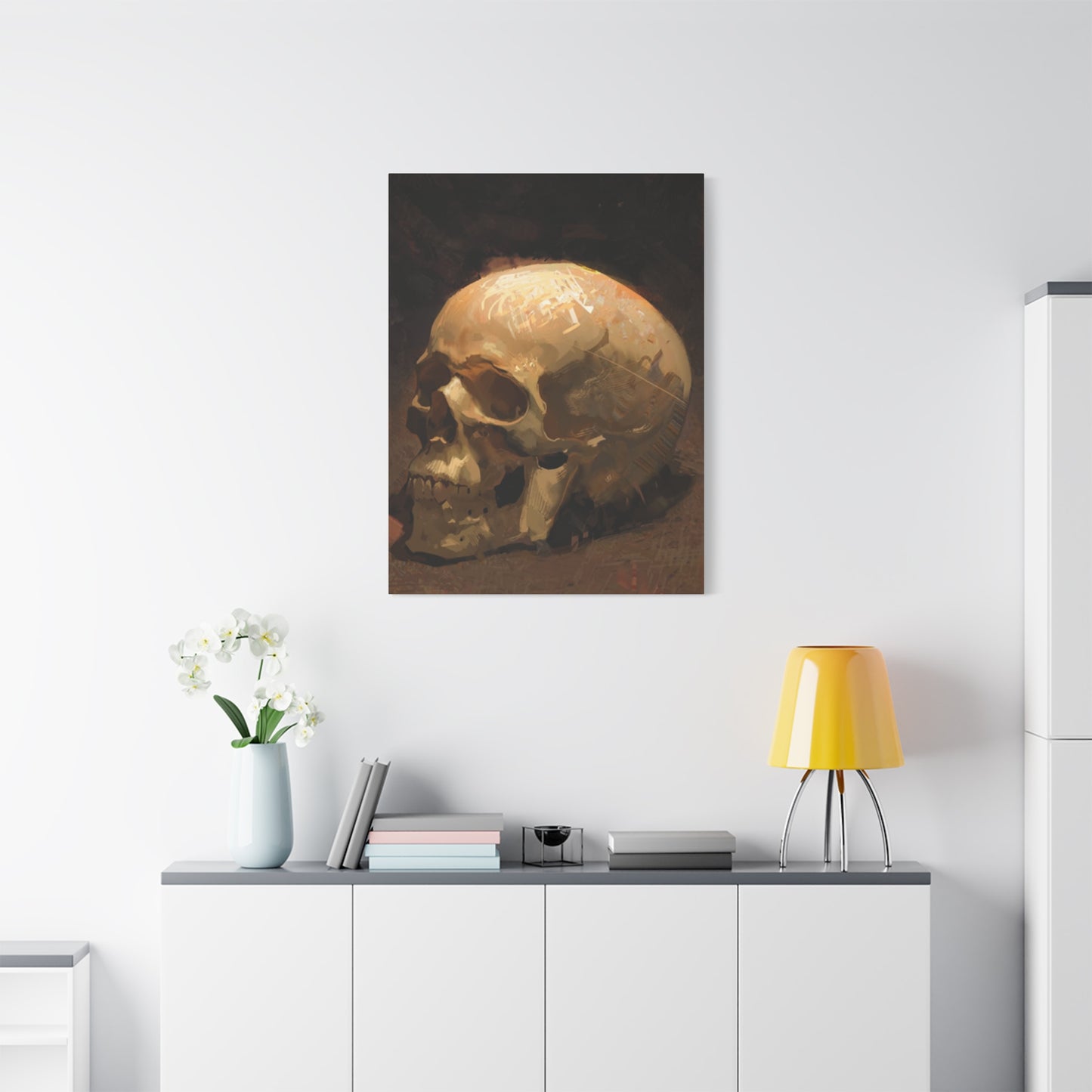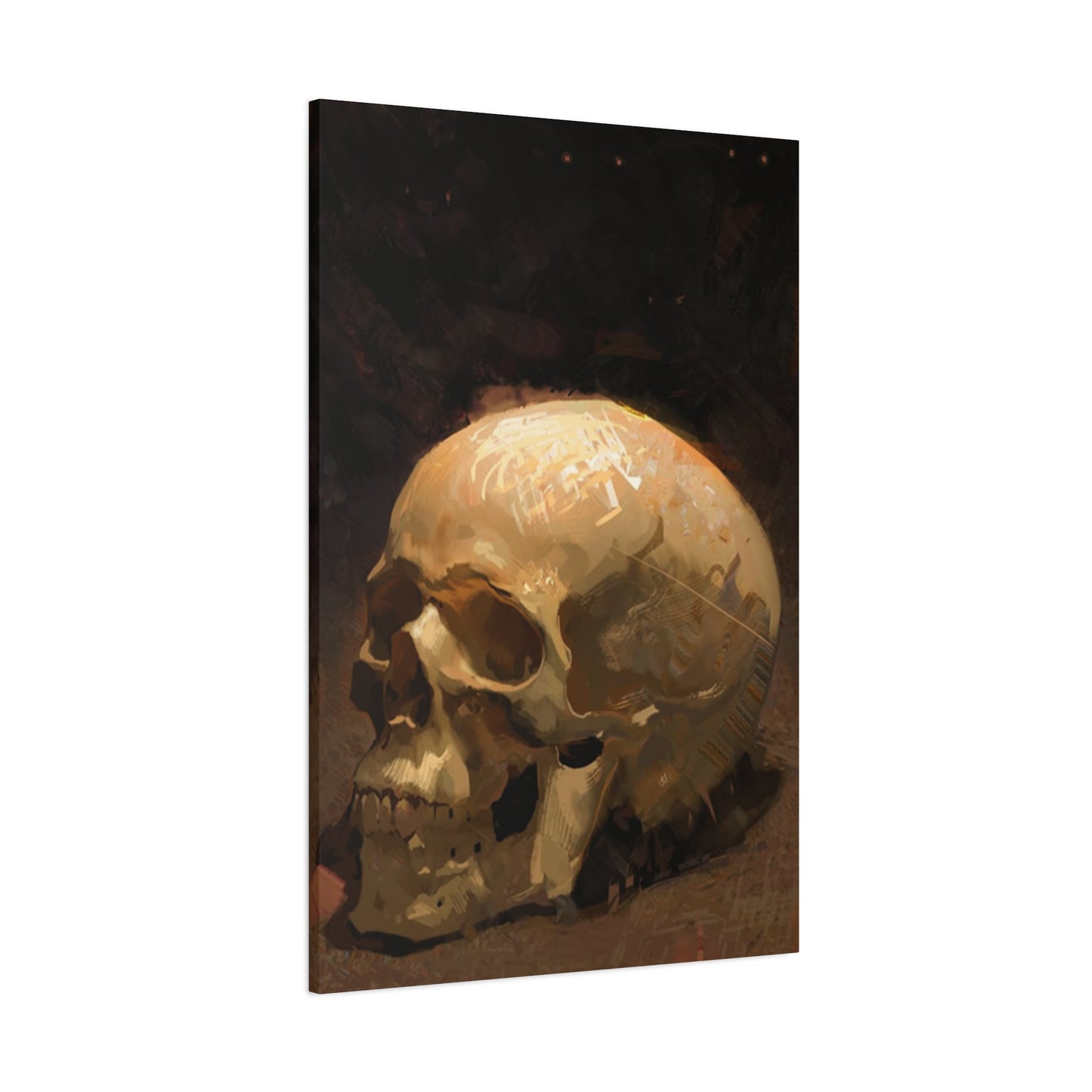The Ultimate Guide to Styling White Skull Wall Art for Modern, Minimalist, and Industrial Interiors
The intersection of mortality symbolism and contemporary design has created a fascinating movement in interior decoration. White skull posters represent a remarkable evolution in home aesthetics, where provocative imagery meets refined sensibility. These artistic pieces have transcended their gothic origins to become sophisticated statements in modern living spaces. The stark beauty of skeletal forms rendered in pristine white against various backgrounds offers homeowners an opportunity to inject personality and depth into their environments without overwhelming existing design schemes.
Interior design has witnessed numerous trends throughout the decades, but few elements maintain the staying power of skull imagery. What was once relegated to underground culture and alternative lifestyles has emerged as a mainstream design element that appeals to diverse aesthetic preferences. White skull posters specifically occupy a unique position in this evolution, offering the symbolic weight of mortality art while maintaining the clean, approachable appearance that fits seamlessly into contemporary homes. The versatility of these pieces allows them to function equally well in minimalist lofts, eclectic apartments, and carefully curated suburban residences.
The appeal of white skull artwork extends beyond mere decoration. These pieces serve as conversation starters, philosophical touchstones, and artistic focal points that reflect the personality and intellectual curiosity of homeowners. In an era where mass-produced decoration dominates retail spaces, skull posters offer an alternative that feels both personal and culturally relevant. They acknowledge the universal human experience while celebrating the aesthetic possibilities of anatomical form. The choice to display such imagery speaks to a willingness to engage with deeper themes while maintaining a sophisticated visual approach to interior spaces.
Incorporating Skeletal Imagery into Contemporary Living Spaces
The practice of displaying skull imagery in residential settings represents a significant shift in how we approach mortality symbolism in everyday life. Traditional interior design often avoided such direct references to death, preferring instead to create spaces of pure comfort and escapism. However, contemporary design philosophy embraces a more holistic approach to human experience, recognizing that contemplation of mortality can actually enhance our appreciation of life. White skull posters embody this philosophical shift, offering a visual reminder of impermanence without creating oppressive or morbid atmospheres.
Modern homes benefit enormously from the presence of skeletal artwork. These pieces introduce an element of intellectual sophistication that elevates ordinary rooms into spaces with character and depth. The anatomical accuracy of quality skull illustrations adds an educational dimension to their decorative function, making them appropriate for home offices, studies, and creative workspaces where curiosity and learning are valued. The white coloration specifically contributes to a sense of cleanliness and order, transforming what might otherwise feel dark or heavy into something surprisingly light and approachable.
The psychological impact of living with skull imagery deserves careful consideration. Rather than creating anxiety or discomfort, most homeowners find that these pieces actually cultivate a sense of perspective and mindfulness. The skull serves as a memento mori, a reminder to live fully and appreciate present moments. This philosophical dimension adds layers of meaning to what might appear as simple decoration, creating spaces that encourage reflection and thoughtful living. The white presentation softens this symbolism, making it accessible to guests and family members who might find traditional gothic imagery too intense.
Creating cohesive spaces around skull posters requires thoughtful consideration of surrounding elements. These pieces work best when integrated into a larger design narrative rather than functioning as isolated novelties. The surrounding furniture, textiles, and accessories should complement the poster's aesthetic without competing for attention. Neutral color schemes often provide the most effective backdrop, allowing the skull imagery to serve as a focal point while maintaining overall room harmony. The goal is to create environments where the poster feels like a natural expression of the space's character rather than an afterthought or shock element.
The Appeal of Spare Skeletal Artwork
Minimalist design principles have dominated contemporary aesthetics for decades, emphasizing simplicity, functionality, and intentional use of space. White skull posters align perfectly with this philosophy, offering maximum visual impact through minimal elements. The stark beauty of a skull rendered without excessive detail or ornamentation exemplifies minimalist ideals. These pieces demonstrate how powerful imagery can be when stripped of unnecessary embellishment, allowing the essential form to communicate directly with viewers without distraction or dilution.
The relationship between minimalism and skull imagery runs deeper than surface aesthetics. Both approaches acknowledge fundamental truths about existence, stripping away superficiality to reveal core realities. A minimalist skull poster removes the decorative elements that might soften or romanticize skeletal forms, presenting them with honest directness. This authenticity resonates with people who appreciate design that respects intelligence and emotional maturity. The white coloration enhances this effect, providing clarity and cleanliness that emphasizes form over drama.
Integrating minimalist skull artwork into living spaces requires understanding how less can truly become more. These pieces thrive in environments where they have breathing room, where walls aren't crowded with competing imagery. A single well-chosen skull poster can anchor an entire room, providing visual interest without creating clutter. The surrounding space becomes as important as the artwork itself, with negative space serving as a frame that highlights the poster's significance. This approach creates rooms that feel intentional and curated rather than randomly decorated.
The psychological comfort of minimalist skull art stems from its honesty and lack of pretense. In a world filled with visual noise and excessive stimulation, these pieces offer visual rest. The simple forms don't demand constant attention or interpretation, instead providing a stable presence that becomes part of the room's character. Homeowners report that living with such artwork creates a sense of calm clarity, where spaces feel both interesting and peaceful. The skull reminds us of essential truths while the minimalist presentation keeps these reminders gentle rather than overwhelming.
Contemporary artists working in this genre understand the power of restraint. The best minimalist skull posters achieve remarkable emotional resonance through careful attention to line weight, composition, and negative space. Every element serves a purpose, with nothing included merely for decorative effect. This discipline results in artwork that rewards extended viewing, revealing subtle details and compositional choices that might not be immediately apparent. Collectors of such pieces often find themselves discovering new aspects even after years of daily viewing.
Striking Skeletal Wall Pieces for Interior Distinction
Bold design choices define memorable spaces. White skull posters offer homeowners an opportunity to make strong visual statements without resorting to garish colors or overwhelming scale. The boldness of these pieces comes from their subject matter and compositional strength rather than flashy presentation. A well-designed skull poster commands attention through the power of its imagery and the confidence of its execution. These pieces appeal to individuals who want their homes to reflect personality and conviction rather than following safe, predictable design formulas.
The impact of bold skull artwork extends throughout entire rooms. These pieces establish a tone that influences subsequent design decisions, guiding choices about furniture, lighting, and accessories. A bold white skull poster might inspire an entire color scheme based on monochromatic contrasts, or it might serve as the edgy counterpoint to otherwise soft, organic design elements. The key is recognizing the poster's potential as a design anchor and building around it with intentional cohesion. Spaces developed around such focal points achieve a level of design maturity that random accumulation can never match.
Selecting the right scale for bold skull artwork requires careful consideration of room proportions and viewing distances. Larger spaces can accommodate oversized posters that make dramatic statements visible from across rooms. Smaller spaces might benefit from more modestly sized pieces that create impact through placement and framing rather than sheer size. The goal is to achieve presence without overwhelming the space or making it feel crowded. Professional designers often recommend measuring wall space and creating paper templates to test sizes before making final purchases.
The framing and presentation of bold skull posters significantly influences their impact. Quality framing elevates artwork from mere decoration to serious design element. Clean, simple frames in black, white, or natural wood typically work best, avoiding ornate designs that compete with the poster itself. Matting can provide breathing room around the image while protecting it from direct contact with glass. The choice between glass and acrylic covering depends on lighting conditions and personal preference, with each offering distinct advantages in terms of clarity and reflection management.
Placement strategies for bold skull artwork require thinking beyond the obvious above-sofa location. These pieces can anchor hallways, create drama in entryways, or transform overlooked spaces like stairwell walls into galleries. The key is ensuring adequate viewing distance and appropriate lighting. Natural light can beautifully illuminate white skull posters, though direct sunlight should be avoided to prevent fading. Artificial lighting options include picture lights, track lighting, or strategically placed floor lamps that create dynamic shadows and highlights across the artwork's surface.
Skeletal Imagery for Refined Aesthetic Enhancement
The intersection of edge and refinement creates some of the most compelling design opportunities. White skull posters occupy this precise intersection, offering imagery with inherent edge softened through refined presentation. This balance allows homeowners to incorporate provocative elements without sacrificing sophistication. The result is spaces that feel current and personality-driven while maintaining the polish and intentionality expected in well-designed homes. This approach appeals particularly to urban professionals and creative individuals who want their living spaces to reflect both their professional competence and their individual character.
Refinement in skull artwork manifests through attention to artistic quality, composition, and execution. The best pieces demonstrate technical skill in rendering anatomical forms with accuracy and grace. Line work should be clean and confident, with careful attention to proportion and spatial relationships. The white coloration requires particular skill to execute effectively, with artists needing to create dimension and interest without relying on color variation. Shading, texture, and compositional choices become crucial elements in creating pieces that transcend simple line drawings to become genuine art.
Creating minimalist touches with skull imagery requires understanding the difference between minimal decoration and minimal impact. The goal is to add character and visual interest without creating clutter or busyness. A single perfectly placed skull poster can provide all the personality a room needs, allowing other design elements to remain simple and supportive. This approach creates spaces that feel curated and intentional, where every element serves a purpose and contributes to an overall aesthetic vision. The refinement comes from knowing when to add and when to restrain.
The cultural sophistication of displaying skull artwork reflects an appreciation for art historical references and symbolic traditions. Skulls have appeared throughout art history, from Dutch vanitas paintings to Mexican Day of the Dead celebrations. Contemporary skull posters connect with these traditions while interpreting them through modern sensibilities. Homeowners who display such artwork signal their awareness of these connections and their willingness to engage with art that carries cultural and philosophical weight. This intellectual dimension adds depth to the purely visual appeal.
Maintaining refinement while incorporating edgy elements requires careful attention to context and presentation. The surrounding design elements should support rather than contradict the skull poster's aesthetic. Furniture should be well-chosen and quality-made, avoiding cheap or disposable pieces that would undermine the sophistication of the overall space. Textiles should be natural and well-crafted, with colors chosen to complement rather than compete with the artwork. Accessories should be minimal and meaningful, selected for their contribution to the room's character rather than accumulated randomly.
Skeletal Artwork for Featured Wall Displays
Statement walls represent one of contemporary design's most effective tools for adding personality to spaces. Rather than decorating all walls equally, this approach designates single walls as focal points that carry heavier design weight. White skull posters serve excellently as anchors for statement walls, providing the visual strength necessary to justify this focused attention. The skull imagery offers sufficient interest and character to reward the emphasis a statement wall receives, making it feel intentional rather than arbitrary.
Creating successful statement walls requires considering the entire wall as a canvas rather than simply finding places to hang individual pieces. The skull poster might be centered and allowed to stand alone, or it might anchor a larger composition including complementary pieces, dimensional objects, or architectural elements. Some designers create texture behind skull posters using board and batten, shiplap, or textured wallpaper that adds depth without competing with the artwork. Others paint statement walls in colors that differ from surrounding walls, creating clear boundaries that frame the featured artwork.
The psychological impact of statement walls stems from their ability to create memorable spatial character. Entering a room with a well-executed statement wall creates immediate impressions that influence how we perceive and remember spaces. A white skull poster serving as the centerpiece of such a wall becomes associated with the entire room's identity, helping to distinguish it from other spaces in the home. This distinctiveness makes rooms more psychologically satisfying and easier to mentally organize as we move through our homes.
Furniture arrangement should support rather than obstruct statement walls. The best pieces allow clear views of featured artwork while contributing to the overall design narrative. Low-profile furniture works well below statement walls, maintaining visibility while providing necessary function. Furniture placement should create comfortable viewing distances where the skull artwork can be appreciated without strain. In living rooms, this might mean orienting seating to face the statement wall. In bedrooms, it might involve placing the bed where occupants naturally view the featured wall.
Accessorizing around statement walls requires restraint and intentionality. The goal is to support the featured artwork without creating competition or clutter. Decorative objects should be fewer and more carefully chosen than in typical design schemes. Each piece should contribute to the overall narrative established by the skull poster. Some designers recommend removing all accessories initially, living with just the statement wall and essential furniture, then slowly adding elements only when their contribution becomes clear. This disciplined approach prevents the accumulation of visual noise that undermines statement wall impact.
Coordinating Pale Skeletal Art with Understated Color Schemes
Neutral tones dominate contemporary interior design for good reasons. These colors create calm, versatile backgrounds that accommodate changing tastes and allow design flexibility. White skull posters pair beautifully with neutral schemes, adding visual interest and character without disrupting color harmony. The white of the skull imagery relates naturally to the creams, tans, grays, and whites that typically compose neutral palettes, creating cohesion while still providing enough contrast to maintain interest and prevent blandness.
The psychology of neutral spaces enhanced by skull artwork deserves consideration. Neutral rooms risk feeling bland or impersonal without distinctive elements that inject character. White skull posters solve this problem perfectly, providing strong visual presence that transforms neutral from boring to sophisticated. The skull imagery adds an edge that prevents spaces from feeling generic or overly safe, while the white coloration maintains overall color harmony. The result is rooms that feel both calming and interesting, comfortable yet distinctive.
Layering tones within neutral schemes creates depth that prevents flatness. A white skull poster might hang on a greige wall above a taupe sofa with cream cushions, ivory curtains framing windows, and dark walnut flooring grounding the space. These layers of similar but distinct neutral tones create subtle complexity that rewards attention while maintaining overall calm. The skull poster serves as a focal point within these layers, its form providing visual interest that the color palette intentionally avoids.
Natural materials complement both neutral color schemes and white skull imagery. Wood, stone, linen, wool, leather, and other organic materials contribute texture and warmth that prevent neutral rooms from feeling cold or sterile. A white skull poster gains additional impact when displayed above a natural wood credenza or surrounded by linen curtains. The organic irregularity of natural materials contrasts beautifully with the precise anatomical forms in skull imagery, creating engaging tension between organic and scientific, random and ordered.
Metallic accents add sparkle and sophistication to neutral schemes featuring skull artwork. Brass, copper, bronze, gold, silver, or mixed metals in light fixtures, hardware, and accessories catch light and add luxury without overwhelming neutral foundations. A white skull poster framed in brass creates warm elegance, while silver framing produces cooler sophistication. Metallic accessories scattered throughout rooms tie together the skull artwork and neutral backgrounds, creating cohesion across all design elements.
Single-Tone Skeletal Posters for Assertive Room Design
Monochrome design schemes possess timeless appeal based on their clarity and boldness. Using only black, white, and grays creates high-contrast environments with dramatic visual impact. White skull posters naturally excel within such schemes, their forms standing out sharply against dark backgrounds while maintaining the color discipline that makes monochrome design so powerful. These spaces feel intentional and sophisticated, eschewing color's emotional complexity for the stark drama of light and dark.
The architectural quality of monochrome spaces enhanced by skull imagery creates almost sculptural rooms. Without color to distract attention, eyes focus on form, line, texture, and spatial relationships. White skull posters contribute strong linear elements and organic forms that contrast with architectural geometry. The interplay between skull curves and room angles creates visual interest that sustains attention over time. These spaces often photograph beautifully, their graphic quality translating well to images that capture design impact.
Texture becomes crucial in monochrome schemes to prevent flatness and monotony. Since color variation is eliminated, designers must introduce variety through textural contrast. Smooth skull posters might be paired with nubby wool textiles, rough concrete surfaces, sleek metal finishes, and soft leather upholstery. These varied textures catch light differently throughout the day, creating changing appearances that keep spaces dynamic. The skull artwork serves as a smooth, graphic element within this textural landscape, its clean presentation contrasting with more complex surrounding textures.
Lighting design plays exaggerated roles in monochrome spaces featuring skull artwork. Since color cannot provide visual variety, light must create interest through intensity, direction, and shadow. Dramatic lighting can cast skull poster shadows across walls, effectively doubling the artwork's presence. Spotlights can create high-contrast illumination that emphasizes skull forms. Ambient lighting can soften the overall effect, making monochrome schemes feel less severe. Experimenting with lighting reveals how dramatically it affects monochrome spaces and skull artwork presentation.
The confidence required to commit to monochrome schemes appeals to decisive homeowners with strong aesthetic visions. These spaces make bold statements about occupants' design sophistication and willingness to pursue their preferences regardless of broader trends. White skull posters reinforce this confidence, their edgy subject matter matching the boldness of strict color limitation. Together, monochrome schemes and skull imagery create environments that feel certain and unapologetic, reflecting occupants who know what they want and aren't afraid to achieve it.
Pale Skeletal Posters Enhancing Shadow-Rich Interiors
Dark interiors represent a brave choice in contemporary design, rejecting the light-filled aesthetic that dominates shelter magazines in favor of moody, intimate spaces. White skull posters serve as perfect complements to dark schemes, providing essential contrast that prevents spaces from feeling oppressive while maintaining the dramatic character that makes dark interiors appealing. The white imagery pops against dark backgrounds with striking intensity, creating focal points that organize visual attention and provide relief from overwhelming darkness.
The psychology of dark spaces enhanced by white skull artwork differs markedly from typical bright, cheerful room psychology. Dark rooms feel protective and cave-like, offering retreat from external demands. They encourage introspection and intimacy rather than social performance. White skull posters within such spaces reinforce this contemplative character, their mortality symbolism fitting naturally into environments that already embrace intensity and depth. These spaces often become favorites for reading, conversation, or solitary restoration, their character supporting meaningful rather than superficial activities.
Balancing darkness with sufficient light for function and comfort represents the central challenge of dark interior design. White skull posters contribute to this balance by reflecting available light and creating bright spots within dark fields. Strategic lighting of skull artwork ensures that spaces maintain usability while preserving their moody character. Dimmable fixtures allow adjustment for different activities and moods, with bright light for tasks and softer illumination for relaxation. The skull posters remain visible across these lighting variations, their white forms catching even minimal light.
Color accents in dark spaces must be chosen carefully to avoid cheapening sophisticated schemes. White skull posters provide neutral accent possibilities, but small amounts of color might appear in plants, book spines, or decorative objects. Rich jewel tones like emerald, sapphire, or ruby can add luxury to dark spaces without lightening them. Metallics in brass or copper add warmth, while silver and chrome maintain cooler temperatures. These accents should be minimal, preserving the dark space's fundamental character while preventing it from feeling monotonous.
Maintenance considerations for dark spaces include addressing how easily they show dust and how different materials appear against dark backgrounds. White skull posters naturally resist visible dust accumulation compared to darker artwork. Glass cleaning becomes more apparent in dark rooms where smudges show clearly. Dark walls might require more frequent touching up in high-traffic areas. However, these minor inconveniences rarely outweigh the satisfaction of living in spaces with such distinctive character, particularly when enhanced by striking white skull artwork.
Skeletal Imagery Within City-Inspired Living Areas
Urban style design embraces the aesthetic of modern city living, with influences from converted lofts, industrial spaces, and contemporary metropolitan apartments. White skull posters fit naturally into these contexts, their edge and sophistication matching the urban lifestyle that inspired the design movement. Exposed brick, concrete floors, metal fixtures, and large windows characterize urban spaces, creating industrial-chic environments where skull imagery feels perfectly appropriate. The combination suggests cultural awareness, artistic engagement, and the confident individualism associated with successful urban living.
The historical connection between urban environments and artistic movements strengthens the relationship between city-style spaces and skull artwork. Urban centers have always served as homes for artists, musicians, writers, and creative professionals who adopted skull imagery in their work and personal aesthetics. Displaying white skull posters in urban-inspired homes connects with this heritage, suggesting participation in ongoing cultural conversations. The artwork implies that residents engage with art, music, literature, and ideas rather than passively consuming mainstream culture.
Materials selection in urban-style spaces should complement both the industrial aesthetic and skull artwork. Metals in steel, iron, aluminum, and chrome reference industrial origins while providing sleek surfaces that contrast with organic skull forms. Wood should feel reclaimed or minimally processed, maintaining connection to natural origins while fitting industrial contexts. Concrete in floors or surfaces provides raw texture that balances skull poster smoothness. Leather in furniture adds luxury that softens industrial edges while maintaining masculine character appropriate to urban design.
Open floor plans common in urban spaces create opportunities for strategic skull poster placement. Without traditional room divisions, sight lines extend across multiple functional areas. Skull posters can serve as visual anchors that help define zones within open plans. A poster above a dining table helps establish that area's identity. Another poster in the sleeping zone creates separation from living areas. These visual markers provide psychological organization in spaces lacking physical barriers, making open plans feel coherent rather than chaotic.
Technology integration in urban spaces should be handled thoughtfully to avoid undermining analog charm of skull posters. While urban living typically involves significant technology presence, visible wires and glowing screens can detract from design schemes. Concealing or minimizing technology visibility maintains focus on intentional design elements like skull artwork. Wireless systems, hidden cable management, and carefully chosen technology aesthetics ensure that modern functionality doesn't compromise urban industrial character. The goal is spaces that feel both contemporary and timeless, technologically capable but not dominated by gadgets.
Brief Intense Presence with Pale Skeletal Posters
Design impact doesn't always require loudness or excess. White skull posters demonstrate how thoughtfully chosen elements can create significant presence through substance rather than volume. A single skull poster in a room introduces just enough edge to transform the space without overwhelming it. This approach appeals to homeowners who want personal, distinctive spaces but also value restraint and sophistication. The result is environments that reveal their character gradually rather than announcing it immediately, rewarding sustained attention with discovered details.
The strategic use of singular statement pieces creates design coherence often lacking in spaces filled with competing elements. When every wall holds multiple items and every surface displays collections of objects, nothing receives adequate attention. A white skull poster given prominence within relatively spare surroundings commands attention and creates memorable impact. This focused approach makes design decisions easier, as each potential addition must justify its presence rather than simply filling available space. The discipline creates rooms that feel curated and intentional.
Negative space surrounding skull posters contributes as much to their impact as the imagery itself. Design theory recognizes that empty space provides visual rest and emphasizes what it surrounds. A white skull poster centered on an otherwise bare wall gains power from the emptiness around it, which directs attention and prevents visual competition. Learning to appreciate and preserve negative space represents a maturation in design thinking, moving beyond the impulse to fill every void toward more sophisticated spatial awareness.
The longevity of subtle approaches exceeds that of more extreme design choices. Dramatic, highly specific design schemes tend to wear out their welcome relatively quickly, prompting redesigns and updates. Subtle skull poster installations within relatively neutral contexts maintain their appeal far longer. As tastes evolve, these installations adapt more easily than comprehensive themed rooms. The initial restraint pays ongoing dividends in sustained satisfaction and reduced need for costly updates.
Psychological comfort in subtly edgy spaces comes from their balance between interest and ease. Rooms need sufficient character to feel personal and engaging, but too much intensity creates stress rather than comfort. White skull posters supply character without demanding constant attention, fading into comfortable familiarity while remaining available for contemplation when desired. This balance makes them suitable for frequently used living spaces rather than only special-occasion rooms.
Simplified Visual Impact with Skeletal Art
Minimalist philosophy extends beyond mere aesthetic preference to encompass broader lifestyle values emphasizing intentionality, mindfulness, and focus on essentials. White skull posters align perfectly with these values, offering maximum impact through minimal means. The stark beauty of skeletal forms rendered without excess creates powerful images that require no embellishment or explanation. These pieces demonstrate how effective design can be when stripped of everything nonessential, presenting only what truly matters.
The practice of living minimally affects how we experience and use spaces. Rooms containing fewer objects feel larger, cleaner, and more peaceful. Each remaining element gains importance through the absence of competition. A white skull poster in a minimalist room becomes a significant presence, its imagery offering sufficient visual interest to prevent the space from feeling stark or unwelcoming. The poster provides a focal point for contemplation without creating clutter or demanding excessive attention.
Selecting skull posters for minimalist contexts requires attention to quality over novelty. Since minimalist spaces contain fewer decorative elements, each piece must justify its presence through genuine merit. The skull imagery should demonstrate artistic skill, thoughtful composition, and authentic aesthetic value rather than simply shocking or amusing viewers. Quality pieces reward repeated viewing with discovered details and sustained visual interest, while novelty items quickly lose their appeal and begin to feel like clutter despite their physical presence being minimal.
Color discipline in minimalist spaces typically limits palettes dramatically. All-white spaces create calm, expansive feelings while requiring careful attention to texture and form for visual interest. White skull posters in white rooms create subtle presence, their forms emerging through line and shadow rather than color contrast. Gray spaces offer slightly more contrast while maintaining minimalist calm. Black and white combinations create drama while honoring minimalist color restraint. These limited palettes focus attention on essential design elements rather than dispersing it across competing colors.
Maintenance of minimalist spaces requires ongoing discipline to prevent accumulation. The temptation to add just one more item must be constantly resisted. White skull posters satisfy the desire for visual interest without opening floodgates to unlimited decoration. Their presence can actually support minimalist discipline by providing sufficient character that additional items feel unnecessary. The poster becomes a kind of visual anchor that makes the space feel complete and intentional rather than empty and unfinished.
The spiritual dimension of minimalism connects to various contemplative traditions emphasizing simplicity and focus. White skull posters support this dimension through their memento mori symbolism, reminding viewers that life's brevity argues for focusing on what truly matters. The combination of minimalist environment and skull imagery creates spaces conducive to meditation, reflection, and the kind of deep thinking increasingly difficult in cluttered, distracted contemporary life. These spaces offer refuge from overwhelming sensory bombardment that characterizes much of modern existence.
Skeletal Posters Complementing Raw Industrial Decoration
Industrial decoration celebrates materials and construction methods typically hidden in conventional design. Exposed beams, visible ductwork, concrete surfaces, and metal fixtures create spaces acknowledging their structural realities. White skull posters complement this honesty through straightforward presentation of anatomical forms. Both industrial design and skull imagery reject decorative concealment in favor of authentic presentation. This philosophical alignment creates natural compatibility that makes skull posters feel at home in industrial contexts.
The masculine energy often associated with industrial design finds natural complement in skull imagery. Both aesthetics traditionally appeal more to male sensibilities, though increasingly diverse audiences embrace them. The combination creates spaces with strong character that avoid overtly feminine softness without becoming aggressively masculine. Women and non-binary individuals can absolutely embrace these aesthetics, with the combination offering alternatives to conventionally gendered design approaches. The key is recognizing that strength and edge aren't inherently masculine but rather human qualities available to all.
Patina and age marks valued in industrial spaces connect to skull imagery's mortality themes. Industrial design often features reclaimed materials showing wear and history, celebrating marks of use rather than pristine newness. This appreciation for age and impermanence aligns with skull symbolism acknowledging that all things eventually decay. White skull posters in industrial settings create conversations between material aging and biological mortality, adding philosophical depth to what might otherwise be purely aesthetic choices.
Scale relationships in industrial spaces affect skull poster presentation. These environments often feature high ceilings, large windows, and substantial architectural elements. Skull posters must achieve sufficient presence to avoid being overwhelmed by these dramatic contexts. Larger formats work well in industrial spaces, with some homeowners choosing oversized prints that command attention despite competing architectural features. Gallery walls grouping multiple skull posters create collective impact that reads effectively in large-scale environments.
Functional objects displayed as decoration characterize industrial style, with tools, hardware, and mechanical elements serving as accessories. White skull posters fit naturally into this context, their anatomical precision sharing qualities with technical drawings and scientific illustrations. The posters feel like functional objects, educational references that happen to be beautiful, rather than purely decorative choices. This perception aligns with industrial philosophy valuing utility and honest function over pure ornamentation.
Climate control in industrial spaces with concrete and metal requires consideration. These materials can make spaces feel cold, both literally and figuratively. White skull posters don't solve this problem directly, but their presence as art introduces human element that slightly softens industrial hardness. Combining skull imagery with warm lighting, textile elements, and occasional color accents creates balanced spaces that maintain industrial character while remaining comfortable for actual living. The skull posters contribute to this balance through their organic forms contrasting with hard industrial surfaces.
Pale Skeletal Posters Within Book-Centered Design Schemes
Academic environments traditionally feature extensive book collections that define spatial character. White skull posters integrate beautifully into these scholarly settings, their intellectual symbolism complementing the knowledge contained in surrounding volumes. The visual relationship between spines lined on shelves and skull forms on walls creates pleasing rhythm and texture. Both elements reference accumulated human knowledge and achievement, together suggesting spaces dedicated to learning, thinking, and contemplation.
The color coordination between books and white skull posters creates natural harmony. Book spines offer varied colors that provide visual interest without overwhelming spaces. White skull posters stand out against these color fields while maintaining sufficient neutrality to avoid clashing with diverse spine colors. The posters create focal points within book-filled rooms, organizing visual attention and preventing walls of books from becoming monotonous. This relationship makes skull artwork particularly valuable in home libraries, studies, and reading rooms.
Reading spaces require appropriate atmosphere for concentration and absorption. White skull posters contribute to this atmosphere through their contemplative symbolism and visual interest that doesn't distract. Unlike windows showing changing outdoor scenes or screens displaying dynamic content, skull posters remain static, providing stable visual presence that supports focus rather than fragmenting attention. Their intellectual associations reinforce the room's purpose, creating psychological alignment between environment and activity.
Lighting for reading spaces must serve dual purposes of illuminating texts and displaying artwork. White skull posters benefit from lighting that prevents glare while ensuring visibility. Positioning reading lights to avoid reflecting off framed glass requires experimentation. Some homeowners use anti-reflective glass or acrylic to minimize this issue. The goal is creating environments where books can be read comfortably while skull artwork remains visible and appreciable, with neither function compromising the other.
Academic accessories complement both extensive book collections and skull imagery. Vintage globes, antique scientific instruments, herbarium specimens, and writing implements reinforce scholarly character. These objects share the skull poster's attention to natural forms and scientific observation, creating thematic consistency. The accessories should appear collected through genuine interest rather than purchased as matching sets, maintaining authentic intellectual character that makes academic-inspired spaces appealing.
Personal library organization creates opportunities for integrating skull posters into overall schemes. Books might be arranged by color, creating rainbow effects across shelves. White skull posters can anchor these arrangements, their neutral tones providing visual rest within chromatic progression. Alternatively, books organized by subject create intellectual taxonomy where skull posters might mark specific sections, perhaps hanging above philosophy shelves or natural science collections. These organizational strategies create cohesion between books and artwork.
Simplified Visual Character Through Skeletal Art
Minimalist aspirations require discipline often difficult to maintain in practice. The temptation to accumulate objects constantly threatens minimal environments. White skull posters support minimalist discipline by providing sufficient visual interest that additional decoration feels unnecessary. A single well-chosen poster satisfies the need for personal expression and aesthetic engagement without opening floodgates to unlimited acquisition. This protective function makes skull artwork particularly valuable for people attracted to minimalism but struggling with its demands.
The calming effect of minimal environments enhanced by skull imagery might seem counterintuitive, but most people find that these combinations actually reduce rather than increase stress. Clutter creates low-level anxiety through visual noise and implied responsibilities for organizing and maintaining numerous objects. Minimal spaces eliminate this stress, providing visual rest and mental clarity. The skull poster acknowledges life's ultimate simplicity despite surface complications, reinforcing the psychological benefits of minimal living through symbolic resonance.
Quality assessment becomes crucial in minimalist contexts where few elements exist. Each piece must justify its presence through genuine merit rather than simply filling space. White skull posters for minimalist spaces should demonstrate exceptional artistic quality, with clean execution, thoughtful composition, and archival materials ensuring longevity. Investing in quality pays long-term dividends as these pieces provide sustained satisfaction without requiring replacement or addition of supporting elements to compensate for their shortcomings.
Negative space appreciation distinguishes mature minimalist practice from mere emptiness. The space around a skull poster contributes as much to its impact as the image itself. Learning to see and value negative space represents aesthetic education that enhances not only design sensibility but also broader perceptual awareness. This appreciation extends beyond home environments into how we experience art, nature, and daily life. The skull poster becomes teacher in observing and valuing what isn't there as much as what is.
Maintenance simplicity in minimalist spaces enhanced by skull posters represents practical advantage often overlooked in aesthetic discussions. Fewer objects mean less cleaning, organizing, and maintaining. A single skull poster requires occasional dusting and perhaps yearly frame inspection. This minimal maintenance burden frees time and energy for activities more meaningful than housekeeping. The practical benefits of minimalism combined with the aesthetic and philosophical benefits of skull imagery create compelling argument for this design approach.
Digital decluttering parallels physical minimalism in contemporary life. Just as minimal spaces reduce physical possessions, digital minimalism reduces online presence and virtual clutter. White skull posters support this broader minimalism by serving as focal points for contemplation about what truly matters. The mortality reminder encourages evaluating how we spend time and attention, potentially leading to reduced social media use, more intentional online activity, and greater focus on offline relationships and experiences. The poster becomes catalyst for examining life beyond its immediate aesthetic function.
Perfect Skeletal Art for Unconventional Creative Spaces
Artistic spaces require balancing stimulation and distraction. Too much visual input overwhelms creative thinking, while sterility inhibits imagination. White skull posters occupy the sweet spot, providing engaging imagery without excessive complexity. Creative professionals working in various mediums report that skull imagery supports rather than interferes with their work. The anatomical forms offer visual interest during mental breaks without demanding attention during focus periods. This balance makes skull posters particularly suitable for studios, workshops, and creative home offices.
The interdisciplinary nature of skull imagery appeals to diverse creative practices. Visual artists appreciate the formal qualities of skeletal structures. Writers engage with mortality symbolism and philosophical implications. Musicians connect with the long tradition of skull imagery in rock, metal, and alternative music cultures. Designers recognize strong graphic potential in skull forms. This cross-disciplinary appeal makes skull posters appropriate for multipurpose creative spaces or households containing varied creative practitioners.
Inspiration mechanisms in creative work remain partially mysterious, but environmental factors certainly influence creative output. Spaces that feel authentic and personally meaningful support creative confidence and risk-taking. White skull posters contribute to this authenticity when they genuinely reflect creators' interests and perspectives. The imagery signals willingness to engage with serious themes and reject superficial prettiness, qualities that often correlate with creative depth and originality. The psychological permission granted by authentic environments shouldn't be underestimated in creative practice.
Collection development appeals to many artists, with gathered objects providing inspiration, reference material, and personal meaning. White skull posters can anchor or complement such collections, whether they consist of natural specimens, vintage tools, art books, or found objects. The skull imagery relates to diverse collecting interests through its anatomical, historical, artistic, and symbolic dimensions. Integrating skull posters into collections creates dialogues between pieces that can spark creative connections and new directions.
Documentation of creative spaces has become common practice, with artists sharing studio images on social media and personal websites. White skull posters photograph well, their graphic quality translating effectively to images. The posters contribute to artistic brand building by reinforcing creative identity and aesthetic sensibility. This practical consideration shouldn't dominate design decisions, but awareness of how spaces appear in documentation can influence choices, particularly for professional creatives whose spaces contribute to public perception of their practice.
Community building within creative fields often centers on shared aesthetic sensibilities and cultural references. White skull posters serve as markers indicating participation in alternative cultural currents, helping identify like-minded individuals. Creative communities develop around shared values, interests, and aesthetics, with visual cues like skull imagery facilitating initial recognition and connection. These community ties provide crucial support, collaboration opportunities, and sense of belonging that sustains creative practice through inevitable difficult periods.
Conclusion:
The exploration of white skull posters across varied design contexts reveals artwork of remarkable depth and versatility. These pieces transcend simple decoration to become meaningful elements of home environments that reflect personal values, philosophical perspectives, and aesthetic sensibilities. The journey from initial consideration of skull imagery to fully integrated installations demonstrates how thoughtful design choices transform ordinary spaces into environments with genuine character and substance.
White skull posters succeed across diverse settings because they balance multiple potentially contradictory qualities. They offer edge without aggression, sophistication without pretension, symbolism without heavy-handedness, and visual interest without overwhelming complexity. This balanced nature makes them accessible to wide audiences while maintaining enough distinctiveness to feel personally meaningful rather than generic. The white presentation specifically allows skull imagery to work in contexts where darker or more Gothic presentations might feel too intense or thematically narrow.
The psychological dimensions of living with mortality symbolism emerge as surprisingly positive for most people. Rather than creating anxiety or depression, skull posters typically promote healthier perspective by acknowledging life's ultimate parameters. This memento mori function encourages intentional living, clearer priorities, and greater appreciation for present experiences. The philosophical depth available through contemplating skull imagery adds layers of meaning that purely decorative objects cannot provide, creating homes that support not just comfort but also growth and reflection.
Cultural evolution regarding death and mortality continues making skull imagery more acceptable and understood in mainstream contexts. Contemporary culture increasingly recognizes that healthy mortality awareness contributes to psychological wellness rather than detracting from it. This cultural shift creates space for skull artwork in conventional homes while reducing stigma around death-related imagery and conversation. Homeowners displaying skull posters participate in ongoing cultural transformation toward greater openness about fundamental human experiences.
The practical considerations surrounding skull poster selection, framing, placement, and maintenance prove manageable for most homeowners. Quality pieces require minimal care while providing decades of aesthetic pleasure and psychological benefit. The initial investment in excellent skull artwork pays dividends through sustained satisfaction and reduced need for replacement or updating. Understanding technical aspects like lighting, scale, and color relationships empowers homeowners to display skull imagery optimally, maximizing both visual impact and personal meaning.
Design versatility represents one of skull posters' greatest strengths, with successful applications spanning minimalist to maximalist, industrial to bohemian, modern to traditional contexts. This adaptability stems from skull imagery's fundamental universality combined with white presentation's visual neutrality. The combination creates artwork that adapts to changing design preferences and life circumstances, providing lasting value even as surrounding elements evolve. This flexibility makes skull posters wise investments for people who periodically refresh their spaces.
The social dimensions of displaying skull artwork include inevitable conversations with guests and opportunities for meaningful dialogue about art, philosophy, and personal taste. These interactions can deepen relationships and reveal unexpected common interests while allowing homeowners to articulate their values and perspectives. Most people find that thoughtfully chosen and presented skull artwork provokes positive reactions even from initially skeptical viewers who discover unexpected appreciation for the sophistication and meaning of these pieces.

















